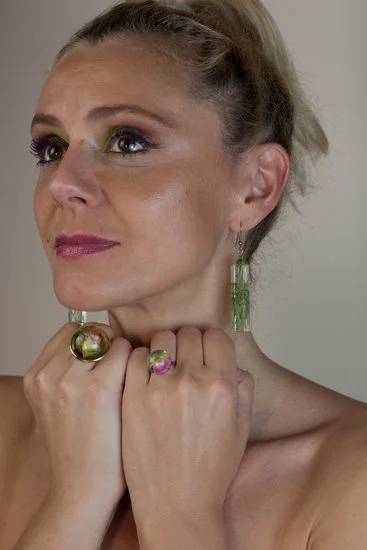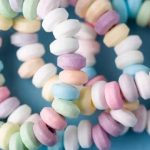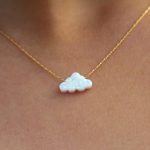Seed beads are essential components in jewelry making, adding intricate details and vibrant colors to pieces. So, what is a seed bead for jewelry? Seed beads are tiny, cylindrical beads that come in various sizes, shapes, and colors, offering endless creative possibilities for artisans. In this article, we will delve into the world of seed beads, exploring their history, characteristics, types, production process, techniques for use, popular designs, and tips for selecting high-quality beads for your projects.
The use of seed beads in jewelry dates back centuries and has evolved over time to become a staple in modern jewelry design. From traditional Native American beadwork to contemporary high fashion pieces, seed beads have been utilized in a multitude of ways to enhance accessories with their beauty and versatility. Understanding the origins and evolution of seed beads sheds light on their significance in the art of jewelry making.
When it comes to seed beads, size matters as much as shape and color. The variations in size range from larger “E” beads to minuscule 15/0 beads; each size serving its purpose depending on the intricacy of the design.
Shapes can vary from round to cube or hexagonal while colors span across the spectrum enabling artists to create stunning patterns and visual effects. With such diversity in characteristics, seed beads offer endless opportunities for creativity and personal expression in jewelry making.
History of Seed Beads
Seed beads have a rich history that dates back centuries, with origins rooted in various cultures across the world. These small beads were initially crafted by hand using traditional techniques such as glass blowing and shaping. The use of seed beads in jewelry making can be traced back to ancient civilizations like the Egyptians, who adorned themselves with intricate beaded jewelry for both symbolic and decorative purposes.
As time progressed, seed beads evolved along with jewelry design trends, becoming an essential component in creating elaborate and detailed pieces. In Native American culture, seed beads played a significant role in storytelling through the intricate designs and patterns woven into items like belts, headdresses, and ceremonial regalia. European beadmakers also contributed to the evolution of seed beads by introducing new shapes, sizes, and colors that added a unique touch to jewelry pieces.
The widespread popularity of seed beads in contemporary jewelry design can be attributed to their versatility and ability to create intricate designs with precision. Modern advancements in bead production have made these tiny beads more accessible and available in a wide variety of options for designers. Whether used as accents in statement pieces or as the main component in delicate designs, seed beads continue to be a staple in the world of jewelry making.
Characteristics of Seed Beads
Seed beads are essential components in jewelry making, known for their small size, wide range of shapes, and vivid color variations. These tiny beads add intricate detail and texture to jewelry pieces, making them a favorite choice among designers and artisans. Understanding the characteristics of seed beads is crucial when creating unique and eye-catching jewelry pieces.
One of the defining features of seed beads is their size variability. Seed beads come in different sizes, ranging from the smallest 15/0 to larger 6/0 beads. The size of a seed bead is denoted by a number, with larger numbers indicating smaller beads. This wide range of sizes allows for versatility in design, as designers can choose the perfect bead size to achieve their desired look.
In addition to their varying sizes, seed beads also come in a multitude of shapes. Some popular shapes include round, cylindrical (also known as Delica beads), bugle (long tube-shaped beads), and cube-shaped beads. Each shape offers unique design possibilities, allowing designers to create intricate patterns and textures in their jewelry pieces. Furthermore, seed beads are available in an endless array of colors and finishes, including opaque, transparent, metallic, matte, and iridescent options.
When selecting seed beads for your jewelry projects, consider factors such as the size, shape, and color that will best complement your design aesthetic. Experimenting with different combinations of seed beads can lead to stunning results that showcase your creativity and attention to detail. Whether you’re creating delicate earrings or statement necklaces, the characteristics of seed beads play a crucial role in elevating your jewelry designs to new heights.
Types of Seed Beads
Seed beads are essential components in jewelry making, adding intricacy and detail to various designs. When exploring the different types of seed beads available for use, one may come across terms such as Rocaille, Delica, and Hex beads. These variations have unique characteristics that cater to different styles and techniques in jewelry creation.
Rocaille beads, also known as round seed beads, are among the most commonly used types in jewelry making. They come in various sizes, ranging from smaller 15/0 beads to larger 6/0 beads. These round seed beads have a smooth surface and uniform shape, making them ideal for intricate beadweaving projects such as peyote stitch or brick stitch.
On the other hand, Delica beads are cylindrical in shape with a larger hole compared to traditional round seed beads. These precision-cut Japanese glass beads are favored for their consistency in size and shape, making them perfect for detailed beadwork patterns like loom weaving or creating fine lines and designs.
Hex seed beads stand out due to their six-sided shape, which adds a unique dimension to jewelry pieces. The flat sides of these hexagonal beads reflect light differently than round or cylindrical seed beads, offering an interesting textural element to beading projects. They are great for creating geometric patterns or adding texture to bead embroidery work.
| Type of Seed Bead | Description |
|---|---|
| Rocaille | Round seed bead with smooth surface, ideal for intricate beadweaving projects. |
| Delica | Cylindrical bead with larger hole and consistent size; perfect for detailed patterns. |
| Hex | Six-sided bead that adds unique texture to jewelry pieces; great for geometric patterns. |
How Seed Beads Are Made
Seed beads are a crucial component in jewelry making due to their small size, versatility, and ability to add intricate detail to designs. But have you ever wondered what goes into the production of these tiny beads that play such a big role in creating beautiful pieces of jewelry? In this section, we will explore how seed beads are made, from the initial production stages to the final finished product that ends up in your jewelry box.
The process of making seed beads starts with the selection of high-quality materials such as glass, crystal, or metal. These materials are then melted down and cut into tiny cylindrical shapes. Next, the beads are placed onto a small rod called a mandrel and carefully heated until they form the desired shape and size. Once cooled, the beads are removed from the mandrel and undergo a series of treatments to enhance their color and finish.
To give you a better understanding of how seed beads are produced, here is a simplified step-by-step guide:
- Selection of raw materials such as glass or crystal
- Melting down the materials and shaping them into cylindrical forms
- Placing the beads on a mandrel and heating them to achieve desired shape and size
- Treating the beads for color enhancement and finishing touches
The final result is a collection of vibrant and meticulously crafted seed beads ready to be used in various jewelry-making techniques. Whether you prefer working with traditional glass rocaille beads or modern metallic options, understanding how seed beads are made can deepen your appreciation for these little gems that play a big role in adorning our favorite pieces of jewelry.
Techniques for Using Seed Beads
Seed beads are tiny, colorful beads that are commonly used in jewelry making. They add intricate detail and texture to pieces, making them a popular choice for both beginners and experienced jewelry makers. One of the most common techniques for using seed beads in jewelry making is the Peyote stitch.
This stitch involves weaving the beads together in a zig-zag pattern to create a flat, even surface. Peyote stitch can be used to create bracelets, necklaces, and even elaborate beadwork designs.
Another popular technique for using seed beads is the Brick stitch. Similar to Peyote stitch, Brick stitch involves weaving beads together in rows to create a solid piece of beadwork. However, Brick stitch differs in that each row is offset from the previous one, creating a brick-like pattern. This technique is commonly used in earrings and pendants to create geometric shapes and patterns.
Loom weaving is another versatile technique for using seed beads in jewelry making. Looms allow you to easily create intricate designs by weaving rows of beads together on a loom base. This technique is perfect for creating larger statement pieces such as cuffs or wide bracelets.
Loom weaving allows for precise patterns and designs that can be difficult to achieve with other techniques. Whether you are creating a simple bracelet or an elaborate necklace, seed beads offer endless creative possibilities when combined with these techniques.
Popular Seed Bead Jewelry Designs
Seed beads are tiny, decorative beads that are commonly used in jewelry making. Despite their small size, they play a significant role in adding intricate details and patterns to various pieces of jewelry. Seed beads come in a wide range of colors, shapes, and sizes, making them versatile and suitable for creating different styles of jewelry. Earrings, bracelets, and necklaces are among the most popular types of jewelry designs that incorporate seed beads.
Earrings
Seed beads are often used to create stunning and colorful earrings. Whether it’s simple studs or elaborate dangle earrings, seed beads can add a touch of elegance and creativity to any earring design. From creating beaded hoops to weaving intricate patterns using different colored seed beads, the possibilities for designing unique earrings with seed beads are endless.
Bracelets
Bracelets made with seed beads are highly popular due to their versatility and customization options. Seed bead bracelets can be made using various techniques such as peyote stitch, brick stitch, or even simple stringing methods.
These bracelets can feature intricate patterns, geometric designs, or even whimsical motifs depending on the creativity and skill level of the designer. Whether worn alone as a statement piece or stacked with other bracelets for a layered look, seed bead bracelets never fail to make a style statement.
Necklaces
Necklaces crafted with seed beads offer a unique blend of sophistication and charm. Seed beads can be used to create elegant chains, intricate pendants, or even striking collar necklaces.
Necklaces made with seed beads can range from delicate chokers to long strands adorned with colorful patterns or focal points created with larger seed bead accents. The versatility of seed beads allows jewelry makers to experiment with different necklace designs that cater to various style preferences – from bohemian chic to classic elegance.
Tips for Choosing High-Quality Seed Beads for Your Jewelry Projects
When it comes to choosing high-quality seed beads for your jewelry projects, there are several factors to consider in order to achieve the best results. One important aspect to look out for is the consistency in size and shape of the seed beads.
Irregularities in size or shape can affect the overall appearance of your piece and may make it harder to work with certain techniques such as bead weaving or embroidery. It is recommended to seek out seed beads that are uniform in size and shape for a professional finish.
In addition to size and shape, the color quality of seed beads is another key factor when selecting beads for your jewelry projects. High-quality seed beads will have vibrant and consistent coloration throughout the entire bead.
Be wary of seed beads that appear dull or have uneven coloring, as this can detract from the overall aesthetic appeal of your finished piece. To ensure a cohesive look in your design, consider purchasing all of the seed beads needed for a specific project at once to minimize any variations in color that may exist between different batches.
Lastly, when shopping for high-quality seed beads, it is important to consider the material from which they are made. Glass seed beads are often preferred by jewelry makers for their durability and beautiful shine. However, metal, crystal, or even acrylic seed beads can also be used depending on the desired effect of the finished piece.
Consider the type of project you are working on and choose seed beads that not only match your vision but also provide durability and longevity to your jewelry creations. By taking these tips into consideration, you can ensure that you are selecting high-quality seed beads that will enhance your jewelry projects and stand the test of time.
Conclusion
Seed beads are a staple in the world of jewelry making, offering endless possibilities for creativity and design. From their humble origins to their evolution into various types like Rocaille, Delica, and Hex beads, these tiny gems have played a significant role in the art of jewelry design. Their small size, varied shapes, and endless color options make seed beads a versatile choice for creating intricate patterns and designs.
In addition to their aesthetic appeal, seed beads also offer durability and longevity when used in jewelry pieces. Whether you’re creating earrings, bracelets, or necklaces, incorporating seed beads can add a unique touch to your designs that sets them apart from mass-produced jewelry pieces. The techniques for using seed beads, such as Peyote Stitch or Loom Weaving, allow for endless creativity and customization in your jewelry projects.
When choosing high-quality seed beads for your jewelry projects, it is essential to consider factors like size consistency, color fastness, and uniformity in shape. By investing in quality seed beads, you can ensure that your finished jewelry pieces will not only be visually stunning but will also stand the test of time.
In conclusion, the versatility and beauty of seed beads make them an essential component in any jewelry maker’s toolkit. Whether you’re a seasoned professional or just starting out in the world of jewelry design, seed beads offer endless opportunities for creativity and expression.
Frequently Asked Questions
What Is a Seed Bead?
A seed bead is a small, often rounded bead that is used in jewelry making and other crafting projects. These beads are typically made of glass or plastic and come in various sizes, colors, and finishes.
What’s the Difference Between E Beads and Seed Beads?
The main difference between E beads and seed beads lies in their size and shape. Seed beads are typically smaller and more uniform in size compared to E beads, which tend to be larger and have a different shape, usually more elongated.
What Do You Need for Seed Bead Jewelry?
To create seed bead jewelry, you will need a few essential tools and materials. These include seed beads in various colors, sizes, and finishes, beading thread or wire for stringing the beads together, clasps or closures to finish off your jewelry piece, as well as basic beading needles and pliers for manipulating the beads.
It’s also helpful to have a beading mat or board to keep your work area organized while creating your piece.

Welcome to my jewelry blog! My name is Sarah and I am the owner of this blog.
I love making jewelry and sharing my creations with others.
So whether you’re someone who loves wearing jewelry yourself or simply enjoys learning about it, be sure to check out my blog for insightful posts on everything related to this exciting topic!





